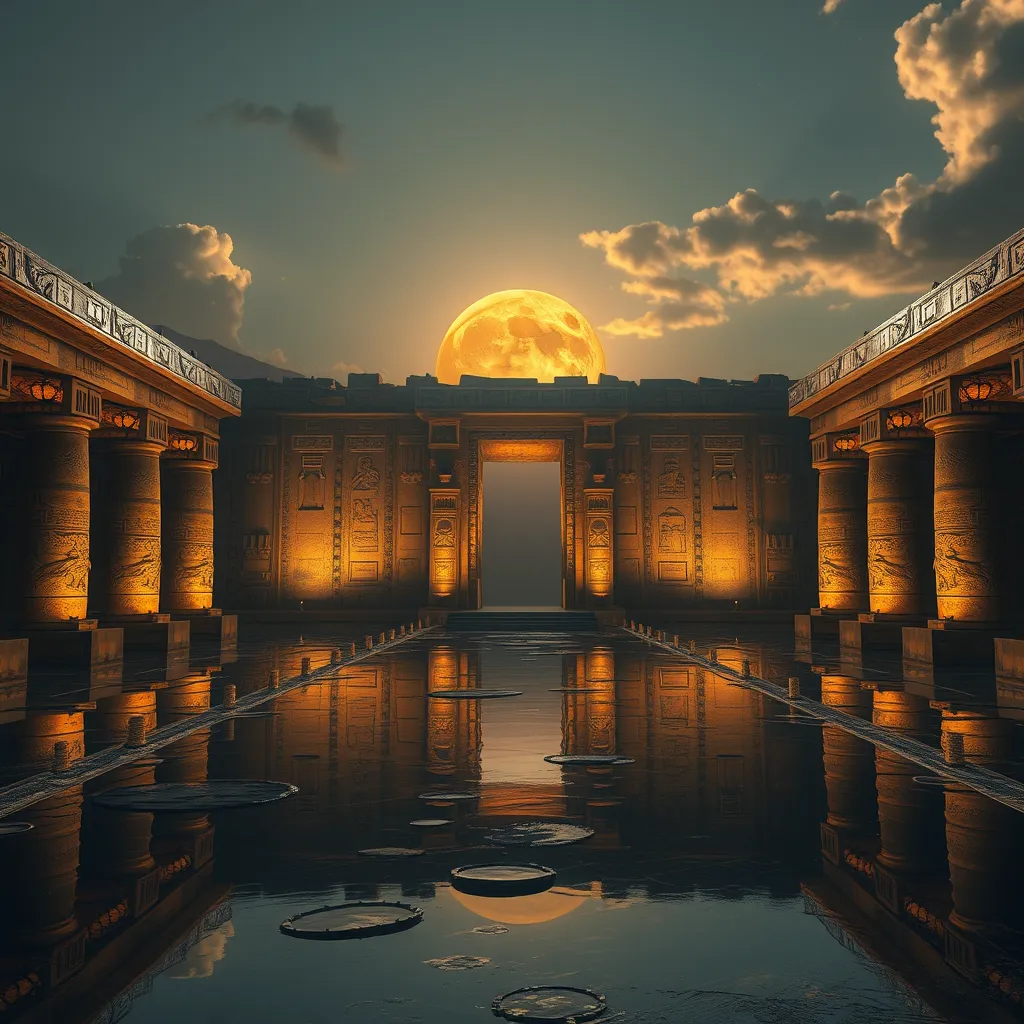The Duat: A Reflection of the Human Condition
I. Introduction
The Duat, in ancient Egyptian belief, represents the realm of the dead, a mystical landscape where souls journey after their earthly existence. It is not merely a place of eternal rest but a complex reflection of the human condition, encapsulating the fears, hopes, and moral dilemmas faced by humanity. Understanding the Duat offers profound insights into how the ancient Egyptians perceived life, death, and the challenges that define the human experience.
II. The Concept of the Duat in Egyptian Mythology
The Duat is often described as a shadowy underworld, a realm filled with obstacles and challenges. It is a place where the soul must navigate through various landscapes, encountering both dangers and divine beings. The significance of the Duat is underscored by its association with key deities in Egyptian mythology:
- Osiris: The god of the afterlife, Osiris is the ruler of the Duat and symbolizes resurrection and eternal life.
- Anubis: The jackal-headed god, Anubis oversees the mummification process and guides souls through the Duat, ensuring safe passage.
- Ma’at: The goddess of truth and justice, Ma’at embodies the moral order that governs the journey through the Duat.
III. The Journey Through the Duat
Upon death, the soul embarks on a perilous journey through the Duat, facing numerous trials that test their worthiness. These trials symbolize the struggles inherent in the human condition, reflecting resilience and the quest for understanding. Key elements of this journey include:
- Confrontations with various deities and supernatural beings.
- Overcoming obstacles such as serpents and fiery landscapes.
- Engaging in riddles or challenges that reflect personal growth and self-discovery.
This journey serves as a metaphor for the human experience, highlighting the importance of perseverance, courage, and the pursuit of enlightenment in the face of adversity.
IV. The Weighing of the Heart: Ethics and Morality
One of the most profound rituals associated with the Duat is the Weighing of the Heart ceremony. In this ritual, the heart of the deceased is placed on a scale opposite the feather of Ma’at. The outcome determines the soul’s fate:
- If the heart is lighter than the feather, the soul is deemed pure and worthy of entering the afterlife.
- If the heart is heavier, it is devoured by the monstrous Ammit, resulting in the soul’s obliteration.
This ceremony reflects the deep-seated values of ethics and morality in ancient Egyptian culture. It prompts reflections on human conscience, accountability, and the moral choices we make throughout our lives.
V. The Role of Judgment and Redemption
Divine judgment in the Duat emphasizes themes of accountability and the potential for redemption. The process reflects the belief that every action has consequences, reinforcing the moral framework within which individuals operate. This concept parallels modern experiences of judgment, where:
- Individuals seek redemption for past mistakes.
- Society grapples with issues of justice and moral responsibility.
Thus, the Duat serves as a poignant reminder of the universal quest for forgiveness and the hope for a second chance, echoing throughout human history.
VI. The Duat as a Mirror of Human Fears and Aspirations
The narratives surrounding the Duat encapsulate the fears associated with death and the afterlife. Ancient Egyptians viewed the Duat as a realm of uncertainty, where the fate of the soul was contingent upon one’s earthly actions. Key fears include:
- The fear of eternal oblivion or punishment.
- The anxiety over the judgment of one’s life choices.
Conversely, the Duat also represents aspirations for immortality and legacy. The elaborate burial practices and tomb constructions were aimed at securing a favorable afterlife, reflecting a desire to transcend mortality and achieve a lasting impact.
VII. Cultural Interpretations of the Duat
The influence of the Duat extends beyond religious beliefs into various aspects of art, literature, and philosophy. Its imagery and themes have inspired countless works, shaping cultural narratives around death and existence. Comparisons can be drawn with other cultures, such as:
- The Greek concept of Hades, where souls face judgment.
- The Christian notion of heaven and hell, emphasizing moral accountability.
- The Hindu belief in reincarnation, where actions determine future existences.
These cross-cultural reflections highlight the shared human fascination with the afterlife and the moral implications of our actions during life.
VIII. Conclusion
In summation, the Duat holds significant meaning in understanding the human condition. It encapsulates the complexities of morality, the trials of existence, and the universal aspirations for meaning and immortality. The narratives and rituals associated with the Duat continue to resonate today, reminding us of the ongoing relevance of these ancient beliefs in contemporary discussions about life, death, and the moral choices we face.




